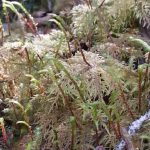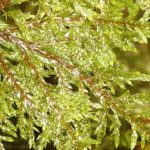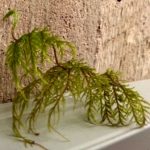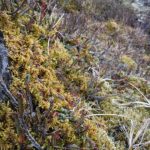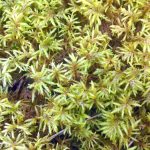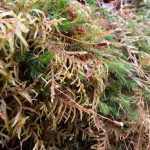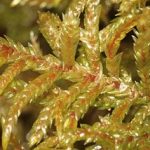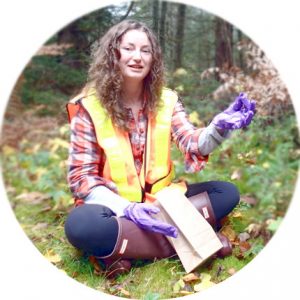How to
Spot Your Moss: Identifying the correct moss species
Learn how to identify the common mosses Hylocomium splendens (stair-step moss) and Pleurozium schreberi (red-stemmed feather moss). You’ll be able to spot them in no time! You can sample one or the other (or both).
Jump to:
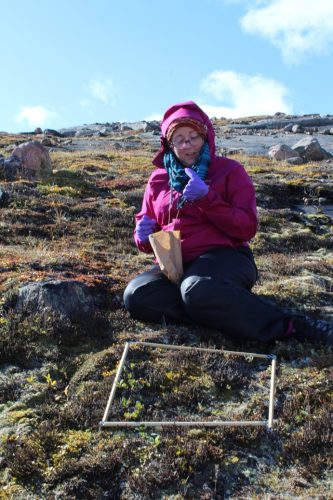
Stair-step moss
Hylocomium splendens
Description
Stair-step moss appears “fern-like” with many small branches covered in more tiny branches. It ranges from 5-20 cm long. Each year’s growth emerges from the top of the previous year’s growth at a 90° angle – just like stair steps!
Its colour ranges from yelow-green to olive green with a red stem. For more details on its form and habitat, see the British Bryological Society’s (BBS) field guide for Hylocomium spendens.

Photo: Wikipedia commons
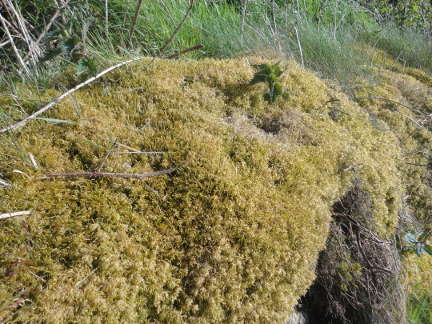
Photo: Phaedra Cowden
Where to find it
Colonies can be found growing in loose mats on the ground, on downed trees or rocks.
- Arctic & alpine growth
In arctic and alpine regions, this moss lacks the stair-step growth form and instead grows in a single erect stem (which is an adaptation to the harsher climates typical to these regions).
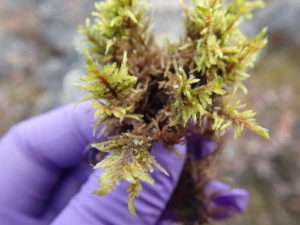
Photo: Phaedra Cowden
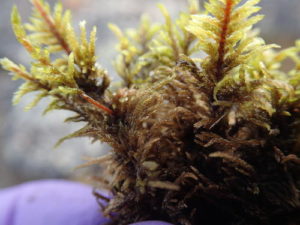
Photo: Phaedra Cowden
Gallery
Have a look at a few different images. Sometimes mosses can look a bit different depending on their growth conditions! The iNaturalist page has lots of additional images.
Video guide
Kayla Wilkins demonstrates how to identify stair-step moss in the field:
Red-stemmed feather moss
Pleurozium schreberi
Description

Photo: Tanner Liang
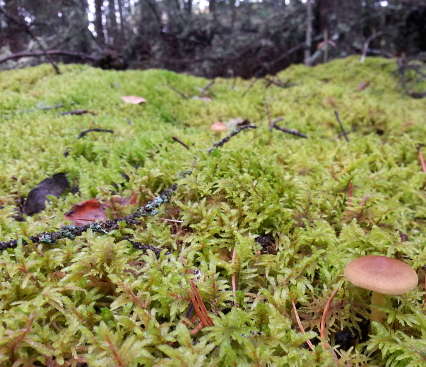
Photo: Phaedra Cowden
Where to find it
Colonies form carpets over large areas and have a “shag carpet “appearance or can grow in smaller clumps among other mosses or grasses.
Gallery
Have a look at a few different images. Sometimes mosses can look a bit different depending on their growth conditions! The iNaturalist page has lots of additional images.
Video guide
Kayla Wilkins demonstrates how to identify red-stemmed feather moss in the field:
Moss Imposters!
These species look similar to the Red-stemmed moss or Stair-step moss, but are not the species we want to sample
- Imposter
Callicladium haldanianum
Watch out for the similar-looking sword moss:
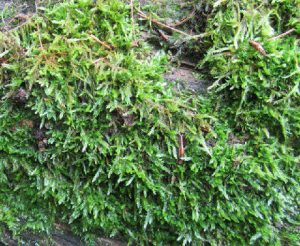
Photo: Wikimedia Commons
However, sword moss:
- Has loosely overlapping leaves giving it a spiky appearance
- Does not have a red stem
- Imposter
Calliergonella cuspidata
Watch out for the similar-looking spear moss:

Photo: Wikimedia Commons
However, spear moss:
- Grows only in wetlands
- Does not have a red stem
- Imposter
Thuidium delicatulum
Watch out for the similar-looking fern moss:
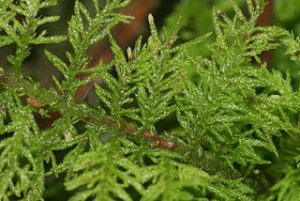
Photo: Wikimedia Commons
However, fern moss:
- Does not grow in the stair step growth form
- Does not have a red stem
- Imposter
Ptilium crista-castrensis
Watch out for the similar-looking knight’s plume moss:
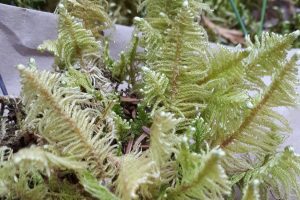
Photo: Kayla Wilkins
However, knight’s plume moss:
- Has very closely spaced branches
- Has branches that narrow in a regular fashion towards the stem tip
- Has leaves that curl toward the underside of the moss
Video Guide
Kayla Wilkins compares Red-stemmed moss and Stair-step moss to other branching mosses:
Other ID guides
Here are some external resources for identifying stair-step moss and red-stemmed feather moss:
UBC Forestry:
A very useful video guide to identifying stair-step moss in the field.
BBS field guide:
A page from the British Bryological Society (BBS) field guide describing Pleurozium schreberi.
inaturalist.ca:
Lots of pictures to view the different growth forms. You can even submit your own!
Société québécoise de bryologie:
Under the tab Bryoquel-mousses, there is a list of all moss species found in Québec, with excellent pictures.
Ready to Sample?
Now you know how to Spot Your Moss and identify Stair-step moss and Red-stemmed feather moss. If you haven’t selected your grid area, you can Reserve Your Turf! Then find out how to Pick and Package your samples.

